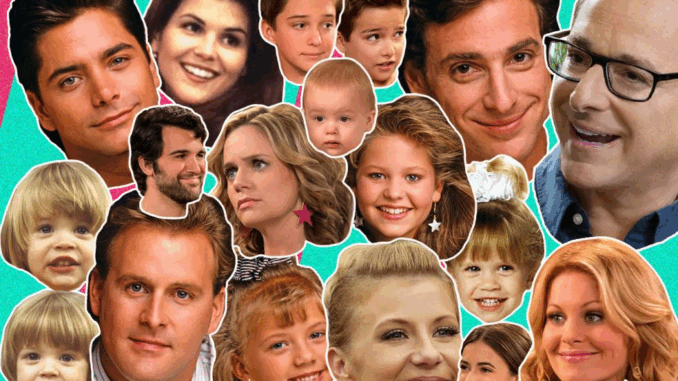
When Netflix announced the reboot of the beloved sitcom Full House in 2016, fans were ecstatic. The revival, titled Fuller House, brought back the Tanner family, but this time with a twist. The new series focused on D.J. Tanner as a widow raising three sons, with Stephanie and Kimmy moving in to help her. But the question remains: did Fuller House live up to the legacy of its predecessor, or did it fail to capture the magic that made Full House such an iconic show?
The Nostalgia Factor
For many viewers, Fuller House was an immediate win simply because it brought back the Tanner family. The theme song, the familiar house, and the iconic cast members—seeing them again made fans feel like they were revisiting an old friend. However, nostalgia alone can’t carry a series, and the pressure to live up to the original was immense.
What Fuller House had going for it was its ability to tap into the emotions of long-time fans. The initial excitement of seeing characters like Uncle Jesse, Joey, and Kimmy was hard to beat. The show leaned heavily into fan service, often referencing classic Full House moments and even having the original theme song.
Character Development: Then and Now
In Full House, the characters were all about growing up. We saw D.J. Tanner go through teenage angst, Stephanie dealing with her own growing pains, and Michelle learning how to be a little sister. Each episode showed how each character evolved, not just in age but in wisdom and emotional depth.
In Fuller House, the focus shifted to D.J., now an adult and a mother. The central theme of the show was no longer about growing up but about being a parent, which brought a different tone. While Stephanie and Kimmy remained fun and quirky as they were in Full House, the show introduced the struggles of raising children, which resonated with older viewers who were once children of Full House.
However, the character arcs weren’t as substantial as those of the original series. The nostalgia-filled moments were great, but the overall development of the characters felt somewhat flat. For example, Stephanie’s story arc seemed like a rehash of her younger years rather than something new and transformative. While Kimmy was still lovable, her character had not evolved in the way that D.J.’s had.
Humor: A Throwback or a Miss?
The humor in Full House was wholesome and family-friendly, often revolving around misunderstandings and life lessons. In Fuller House, the humor relied heavily on the established jokes and quirks of the original characters. While it worked for fans of the original show, some viewers found it to be repetitive or even cheesy.
Fuller House often relied on one-liners and slapstick comedy, which is fine for a family show, but it lacked the subtlety and depth of humor that Full House had. The original series balanced humor with emotional moments, whereas Fuller House sometimes felt more focused on the comedic than the meaningful.
Cameos and References
One of the highlights of Fuller House was the frequent cameos by former cast members and guest stars from the original show. These cameos kept the original magic alive and allowed fans to feel like they were still in the Full House universe. Many familiar faces, including the original cast, returned for special moments that brought a smile to fans’ faces.
However, the heavy reliance on these appearances made some critics feel like Fuller House was too dependent on nostalgia. The show often seemed to forget that it needed to stand on its own rather than just rely on Full House‘s legacy.
Conclusion: Was Fuller House Worth the Wait?
Fuller House was certainly a fun ride for fans of the original Full House. While it wasn’t as groundbreaking or universally loved as the original, it did serve its purpose—giving fans another chance to see their favorite characters, while bringing new stories and life lessons to the table. It may not have lived up to the emotional depth or storytelling brilliance of the original, but it was still a delightful tribute to the show that shaped so many of our childhoods.
FAQs
-
What is the main difference between Full House and Fuller House? The main difference is the shift in focus. Full House followed the lives of the Tanner family as they grew up, while Fuller House focuses on D.J. Tanner raising her kids as an adult.
-
Did the original cast return for Fuller House? Yes, many of the original cast members, including Bob Saget, John Stamos, and Dave Coulier, returned for Fuller House to reprise their roles.
-
Why didn’t the Olsen twins return for Fuller House? The Olsen twins chose not to return to Fuller House, citing that they were no longer interested in acting and preferred focusing on their fashion business.
-
Was Fuller House as popular as Full House? While Fuller House garnered significant viewership on Netflix, it did not reach the same level of cultural impact as the original Full House.
-
How long did Fuller House last? Fuller House lasted five seasons on Netflix, from 2016 to 2020, before concluding with a final episode.
